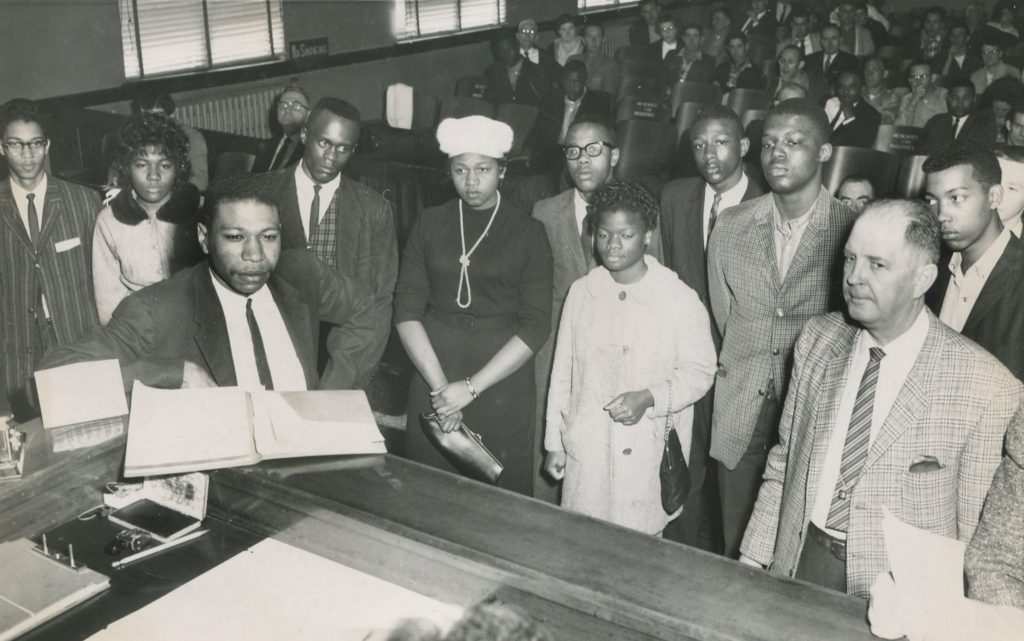This blog post was authored by Kaitlyn Warf, a student in Professor Eckelmann Berghel’s HIST 3475: Modern Civil Rights Struggle class that curated an exhibit on display in the George Connor Special Collections Reading Room, located in room 439 of the University of Tennessee at Chattanooga Library in Spring 2019.
Look-Ins and Stand-Ins: The Desegregation of Chattanooga’s Movie Theaters
For our class, HIST 3475 The Modern Civil Rights Struggle, our group researched the history of Chattanooga’s civil rights movement and youth activism. We began our research by visiting Special Collections several times and combing each group members’ archival findings. In time, each member uncovered numerous historical records and articles and together we developed an engaging timeline of historical events. Young the protesters’ involvement make Chattanooga’s civil rights demonstrations unique. Chattanooga, unlike many major cities in the South, lacks a historic black university, places that mobilized African American students across the region. Instead, Chattanooga’s local Howard High School students brought the national movement to their city. Between the years 1960 to 1963, a wave of civil rights protests reshaped the city’s educational institutions and social fabric.
By February 1960, sit-in demonstrations reached Nashville; Howard students learned of nonviolent protest tactics through newspaper coverage and adopted them to protest local segregated institutions. These sit-ins would persist for several months until late 1960, when Chattanooga businesses met with civil rights leaders and worked out a plan for lunch counter desegregation. After this success, Howard High students focused their attentions on segregated movie theaters. The protests and demonstrations to desegregate movie theaters, often called “look-ins” and “stand-ins”, remain a forgotten moment of Civil Rights activism of the city’s history.

The Howard students who became involved in activism during the sit-ins also participated in the look-ins. The protests focused on two main theaters: State Theater and Liberty Theater, which resulted in two separate charges of disorderly conduct against some of the students. The defense attorney for the students, Bruce Boynton, claimed none of the actions by his clients would constitute “disorderly conduct” and that they have a right to protest. Of the twelve students in court, six were officially charged and ordered to pay a fine of fifty dollars. Five of the students were facing two charges of disorderly conduct.
Much of popular civil rights history focuses on major events, like desegregating schools and voting rights, but these smaller victories represent a major part of civil rights history and showcase the unique contributions of young black high school students. Access to culture and information should not be overlooked as valuable civil rights aims. In segregated movie theaters the norm was for black customers to sit in the balcony while white customers enjoyed the movies on the ground floor. Apart from the desire to enjoy movies on the first floor, students raised concerns about safety when considering that these balconies were often only accessible from outside fire escapes. It was not only a matter of practicality and safety. Segregated movie theaters reflected the broader Jim Crow system of Jim Crow local civil rights activists sought to topple.
